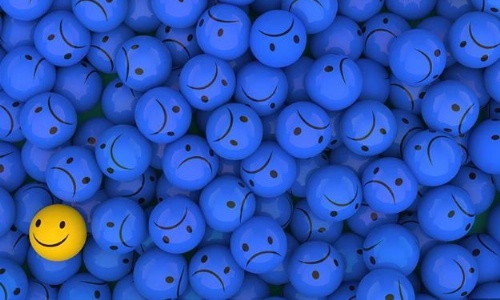Is 'Blue Monday' a 'thing'?

[W+(D-d)] x TQ divided by M x NA = Blue Monday
In this equation, W stands for the weather, D for your debt, d for your monthly salary, T for the time since Christmas, Q for the time since you failed quitting something that you attempted to quit, M for low motivational levels and NA for the need to take action.
All of this may look kind of 'sciencey', but the problem though, is that the formula has not been backed by that stuff known as scientific evidence. As ever, whenever you come up with a formula, it’s important to explain how that formula has been validated, with the possible exception of giving up a New Year's resolution, plus anything else, equals bliss. Without doubt our mathematicians and STEM students would question how on earth you come up with a simple formula that churns out the identical answer for everyone around the world?
Although no single day in the year is universally great for everyone or terrible for everyone, we do understand one thing for certain, at RGS it is exams month and it's hard for all. So, rather than arbitrarily choosing a single day in January and saying, “How does it feel” in the words of the New Order song Blue Monday, it would be better to continue to raise awareness of how young people may be feeling all year round.
Originally, 'Blue Monday' was a marketing ploy for a travel company to drum up business, and although they are now out of business, the 'Blue Monday' legacy has lived on for nearly 20 years. How did they land on the third Monday of January rather than 'Ditch New Year's Resolutions Day' this Wednesday? The company worked with a psychologist to develop a 'depression formula' to indicate when our happiness levels fell to their lowest in the year.
Contrary to what this formula may indicate, not everyone is destined to feel the same way on the third Monday of January in a given year. Unlike the work led by The Prince and Princess of Wales, which is built on world-class research, long-term partnerships, and measurable, scalable impact. This has led them to build ambitious initiatives tackling a wide range of topics on mental health. Through campaigning and projects, such as the national Heads Together campaign, developed and delivered in partnership with leading charities in the UK, they are working together to tackle the stigma of mental health once and for all.
Their impact has been impressive. Six million additional people in the UK have spoken about mental health since the Heads Together campaign began in 2016. Over 540, 000 children, young people and adults in distress are supported by Shout and 1.5 million users access Mentally Healthy Schools since the site launched.
What's on our minds can be the hardest subject. So, what’s on yours?